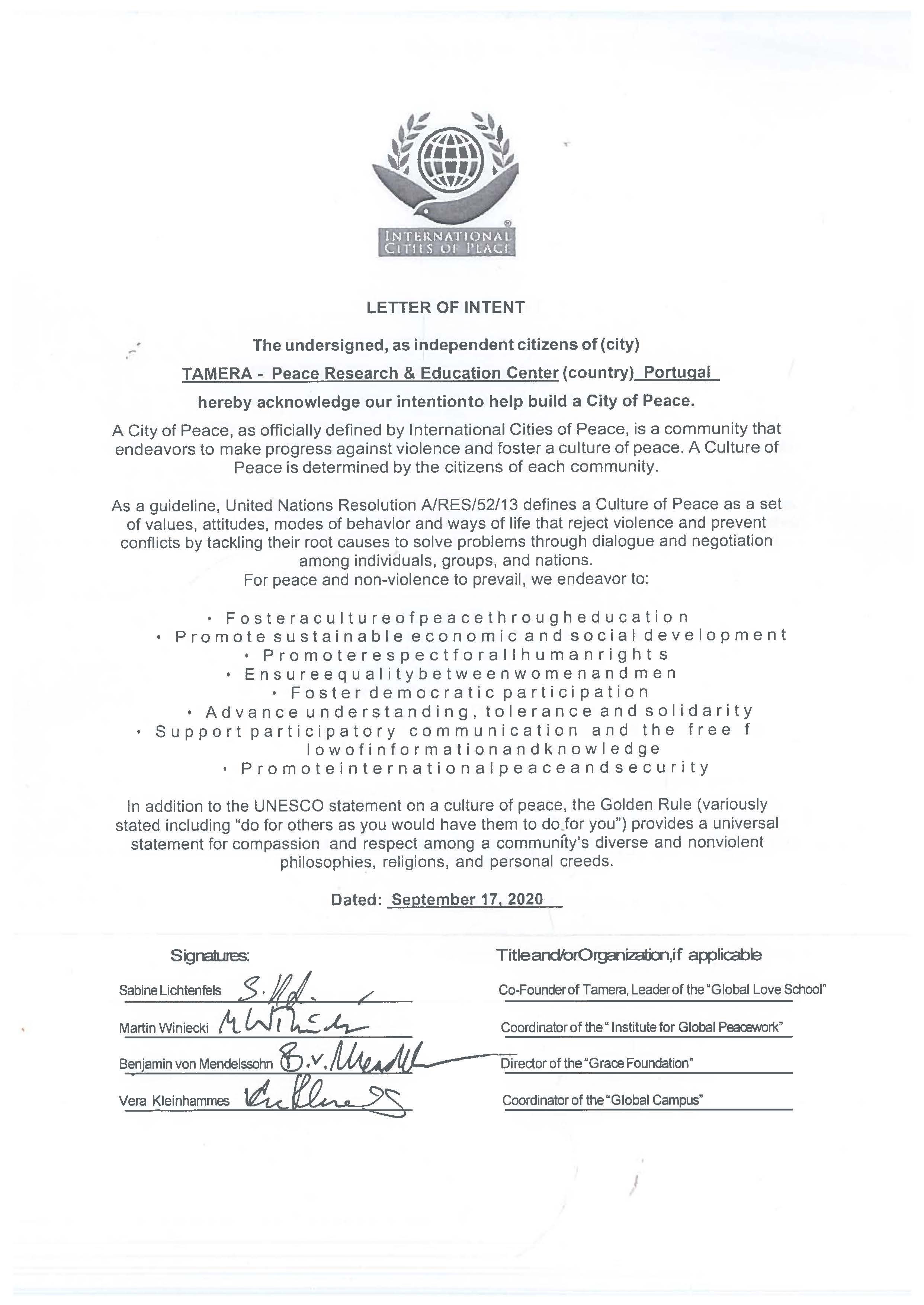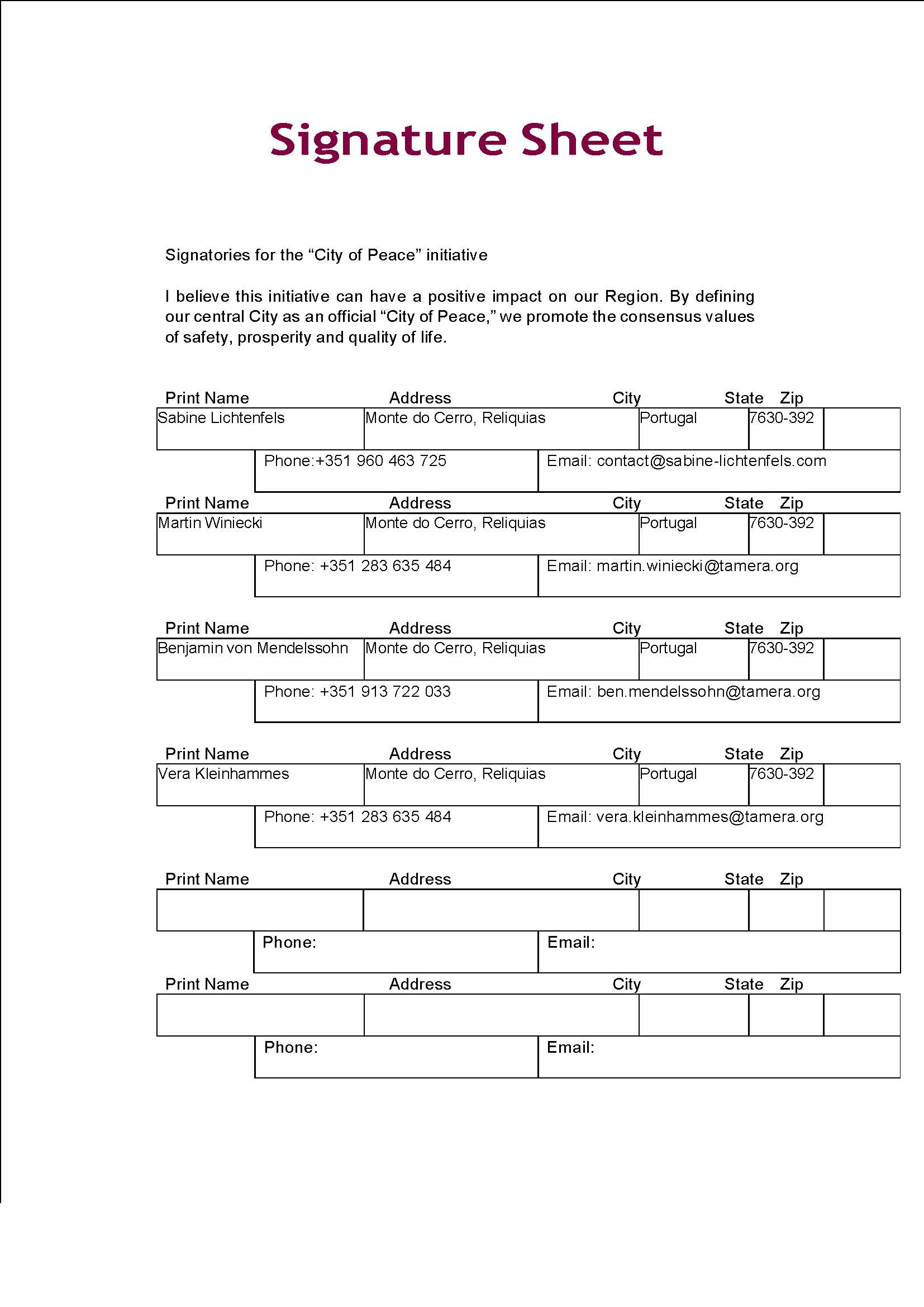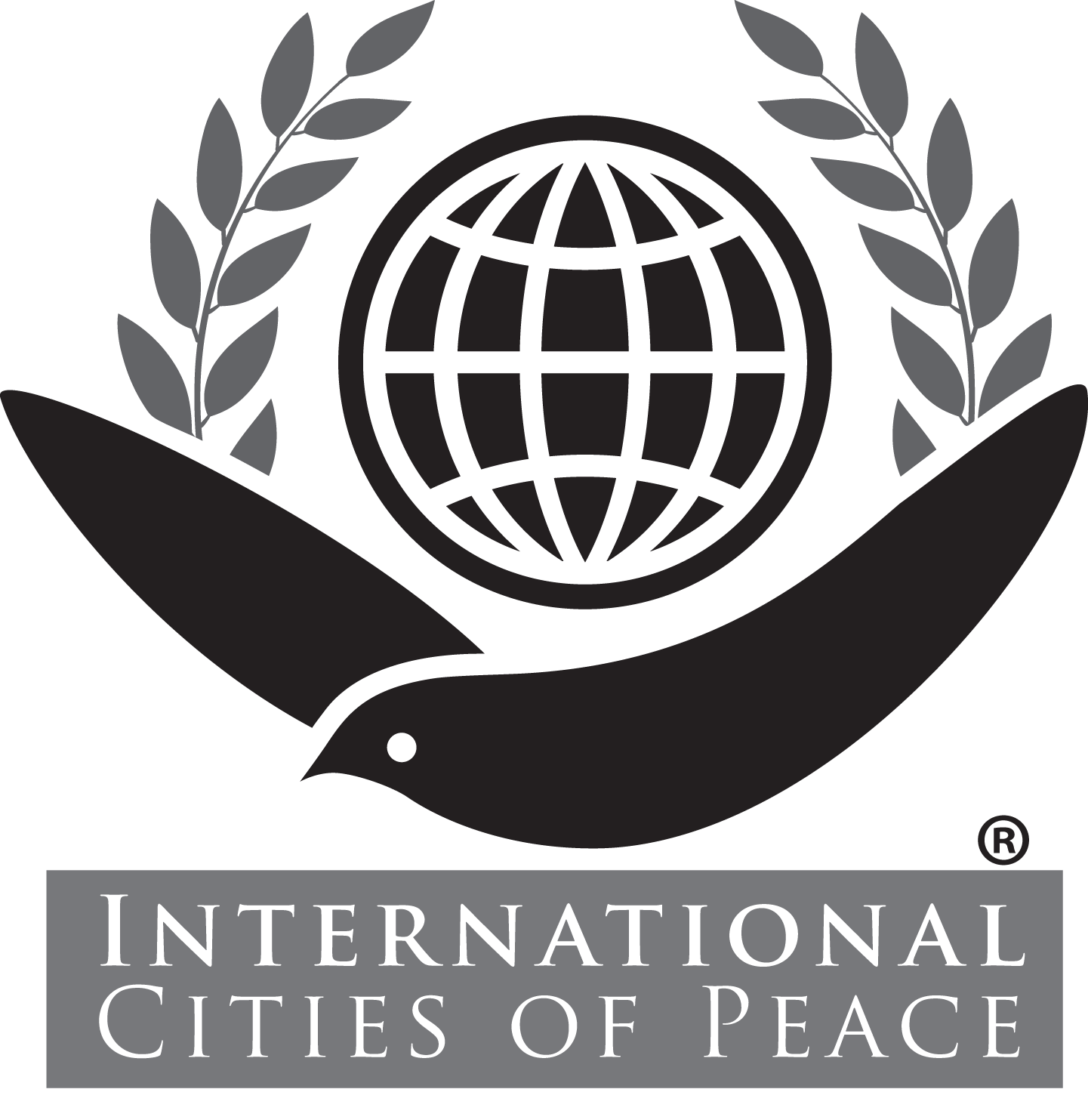Tamera, Monte do Cerro, Reliquias: International City of Peace
We welcome Sabine Lichtenfels, Co-founder of Tamera, Head of the Global Love School, Peace-Researcher and Theologist, and Janni Marianne Hentrich, Coordinator for the Tamera: International City of Peace initiative. The Village provides an example and inspiration for not only the area around the land of Monte do Cerro in Reliquias, Portugal but also for others around the world interested in creating a culture of peace.
Tamera is a peace research and education center with the goal of becoming “a self-sufficient, sustainable and duplicable communitarian model for nonviolent cooperation and cohabitation between humans, animals, nature, and Creation for a future of peace for all.” It is also often called an emerging “Healing Biotope”. Literally translated, “biotope” simply means a place where life lives. In Tamera, however, “healing biotope” is also described as a “greenhouse of trust, an acupuncture point of peace, and a self-sufficient future community.” It is located on 335 acres in the Alentejo region of southwestern Portugal.
Note: Introduction page with information primarily at the time of joining International Cities of Peace. For updates, please contact the liaison.


VISION
We work for a Global System Change – from war to peace, from exploitation to cooperation, from fear to trust. We want to give birth to a world beyond war by establishing Healing Biotopes as models for the world.
Healing Biotopes stand for a vision of a planetary culture of autonomous and interconnected communities around the world: a civilization free of violence, fear and war, where all those who once stood against each other as enemies are reconciled – humans and nature, peoples and religions, men and women.
The Healing Biotopes Plan is a concept for global system change, achieved through a network of Healing Biotopes that create a field for living on Earth nonviolently. Healing Biotopes are models on Earth, where lived examples are developed according to the basic qualities of unreserved trust, full cooperation, solidarity and a sense of belonging with all living beings.
The “Plan” is to concretely build these experimental research and learning centers around the world, where the world that we create and the world that has created us human beings can come together.
When we align with the universal patterns of life, healing happens “by itself“, as we can observe in nature, when healing plants spring up where earth is broken in mines and quarries, or when wounds heal in our own bodies. The peace concept assumes that Gaia-Earth with all its inhabitants is a living unit, is one organism. A unified organism can be influenced and changed through the introduction of suitable information. If it follows the basic laws of life, it will have a field effect throughout the entire organism.

Tamera’s peace concept and strategy contains five parts:
1. The holistic structure of reality: the overall information of the universe can (in theory) be accessed at every point in the universe: what occurs at a single point in the universe is determined by the overall events in the universe. Also, the entire universe can be influenced from every point in the universe.
2. The unified structure of life’s information: The biosphere is a unified organism and there is a universal structure of consciousness operating in all beings. In every living being the overall information of life is imprinted in a special way: in the genetic code of the nucleus of the cell. In all living beings the basic mathematical structure of the genetic code is the same. It only differs in its level of differentiation.
3. The field principle: The field effect is based on the holistic building plan of creation. In a sick body, a single pill may suffice to animate all the cells and organs of the body in the direction of health. The pill introduces healing information into the body, and all elements of the body follow it as in a field. What is true for the body is also true for the entirety of all bodies in the unified life body of Gaia-Earth. Its organs belong together like the organs of a human body. What is the “pill” that we need to introduce into Gaia-Earth in order for peace and healing to occur. With this approach, we are entering into a completely new direction of political thinking.
4. The new information: The new overall information which is to be introduced into the world concerns the central areas of human co-existence and co-existence between humans and nature. Key concepts for this information are: community without domination – solidarity and the coming together of the genders – trust instead of fear – cooperation with nature, animals and all creatures – nutrition without complicity – nonviolent technology – a spiritual life practice, and a universal state of existence.
5. The reality of concrete utopia: In all things there is thus the same song of the world, the same dream. It is a question of recognizing and realizing this dream of the world. Ernst Bloch called it the “utopian latency” or “concrete utopia.” This latency is a subtle matter image of reality which is inherent in all forms as a real blueprint and a real possibility. The existence of concrete utopia makes our efforts to develop new life structures easier, as they are met from within by a power which guides us. A real piece of future reality comes to light in a vision that has truly been seen and found. It is through the vision itself that the realization comes closer.
“The idea of the Healing Biotopes is not a private invention – it lies as a “mental-spiritual blueprint” in the ”Zeitgeist”. It has a high “utopian latency” and a high drive toward manifestation.” (Dieter Duhm, cofounder of Tamera, author and visionary of the Healing Biotopes Plan)

Mission, Goals, Manifestation of “Tamera as a model for the world“
Healing Biotopes synthesize solutions in all areas of Life into a coherent system. What brings about global change isn’t a single solution, person or project, but an integrated unified system. In these centers, every aspect of our lives needs the shift from fear to trust, every aspect of life must be re-modeled and built up as a practical case study. We are empowering a planetary community of change makers to take an active role in the transition to build a regenerative, nonviolent culture by:
• researching the ethical, social, sexual, ecological, technological and economic foundations, and creating a replicable model in Tamera
• training and supporting those committed to the Healing Biotopes Plan
• building a planetary community and sharing our vision with people worldwide.

We are building a planetary community of change makers, do peacework in crisis areas and create a regional and national network in Portugal. We educate and collaborate with partners in various countries on building further Healing Biotopes through the Global Campus. The Grace Foundation raises funds to help this network come into being.

FOR MORE DETAILED INFORMATION, PLEASE GO TO:
LETTER OF INTENT


ABOUT THE LIAISON
Sabine Lichtenfels
Co-founder of Tamera, Head of the Global Love School, Peace-Researcher and Theologist
What Motivates Me
“As a young woman I was already driven by the question of how love can be freed from fear and jealousy. My dream was to build a community where we can show that another life is possible. Today, I can still say that love is guiding us to the deepest system change. When I face what people, animals and the Earth currently suffer, I know that war and destruction will only end if humanity transforms its operating system of fear to one that allows love to enter. Behind all the horror, there is an original sacredness of life that wants to be recognized again. By building communities of trust, we can reconnect humanity to this source.“

Her projects and activities
Since 1978 Sabine Lichtenfels has been working on the Healing Biotopes Plan together with Dr. Dieter Duhm. In 1995 she co-founded the Peace Research & Education Center Healingbiotope Tamera in Portugal. For decades she is a source and internationally renowned voice for female peace knowledge, which she offers in conferences and seminars, books and speeches as well as in international peace actions.
•Tamera Stone Circle
In October 2004 Sabine Lichtenfels began the construction of a Stone Circle in cooperation with the geomancers Marko Pogacnik and Peter Frank. The Stone Circle was completed in 2011. It is a “natural cathedral,” a modern work of art, based on prehistoric Stone Circles. It is emblematic of a peace community. Here, basic values of a partnership culture of peace is derived from prehistoric tribes.
Each stone represents an archetypal power that needs to be present in a community for its stability and balance as a whole.
Pilgrimages in the name of Grace In 2005, shaken by the threat of war against Iran she went on a solitary peace pilgrimage for several months, without money, from Portugal to the Middle East. This became the first of a number of “Grace Pilgrimages,” where she has guided people from different nationalities and religions into a communitarian experience of radical reconciliation. The pilgrimages led to the annual “Global Grace Day” on November 9th, that the Tamera celebrates every year.
Following this, in 2005 she was nominated by a Swiss initiative for a Peace Prize as one of the “1000 Women for Peace”.
Grace is compassion, dignity, beauty and elegance. Grace is patience that sees a new dawn at the horizon of history; Grace is the umbilical cord that connects us to this vision and guides us. Grace is also the strength to ride the bumps of life with humor and lightness. Those who walk in the name of Grace do not come to accuse and “refuse to be enemies“. They do not come to impart a new ideology on a land and its people; they come in the service of openness, of perception and of support. Grace listens deeply for what is most needed. When we stand in fierce grace we become a channel for the outcry of suppressed life.
We use the word Grace for our work, because it reminds us to do everything that we do in the name of reconciliation, of the repairing of our relationship with the source of life and with the family of humanity.
Global Love School
In 2010 Sabine Lichtenfels decided to found the Global Love School – together with Benjamin von Mendelssohn, also as an outcome of the travels into crisis areas, realizing that love is guiding to the deepest system change. The Global Love School is a place for deep exchange and learning in the area of love, sexuality, partnership and ethics for teacher, peaceworkers and activists who want to meet at Tamera once a year for creating a cooperation in the core human topics for community building and healing traumatic wounds of humanity.
Facilitator
Thanks to Nikki de Pina, ICP Outreach Coordinator, for facilitating this effort.
CONTACT INFORMATION
Institute for Global Peacework (IGP)
igp@tamera.org
Tamera Peace Research & Education Center
Monte do Cerro, 7630-392 Reliquias, Portugal
Ph: +351-283 635 484
http://www.tamera.org
Terra Nova: Global Revolution and the Healing of Love
ABOUT TAMERA IN PORTUGAL
Tamera Research & Education Center started 1995 in Portugal and is based in the region “Alentejo“ in southern Portugal. Apart from Portugal’s history as a maritime and colonial empire, Portugal carries several ancient cultural traditions, that Tamera honours.
The history and culture of Portugal is the result of a complex flow of different civilizations during the past centuries, that were leaving their imprint on the unique culture of Europe’s oldest nation-state. Its rich culture results from Celtic, Lusitanian, Phoenician, Germanic, Visigoth, Jewish, Arabic and Moorish influences.
This social mixture of civilizations made Portugal a country, in which different religions and cultures were able to live tin respect and solidarity. This multicultural way of life and a great hospitality you still find in today’s portuguese culture. Music plays an important role in the culture. Fado is the folk music of Portugal – showing the portuguese soul- firmly rooted in all social classes. It is an expression of “saudade“, the Portuguese attitude to life.
Carnation Revolution – “Revolução dos Cravos de 25 de Abril 1974“:
The “Carnation Revolution“ of 1974 refers to the left-wing uprising of large parts of the army in Portugal on 25 April 1974 against the dictatorship of the so-called Estado Novo. This is what is special about the Carnation Revolution: It was almost non-violent and bloodless and opened the way to a democratic Republic. It owes its name to the red carnations, because Lisbon’s inhabitants stood in the streets, putting red carnations into the soldiers’ rifle barrels and uniforms as part of the general public joy.
Music played a key role: The song “Grândola Vila Morena“, performed by Seca Afonso, was the secret signal for the military take over. The 25th of April today is a national holiday, the Day of Liberation „Dia do Liberdade“. The revolutionary tradition still is tangible and perceptible in daily life. People carry a knowledge about creating cooperatives, about living in communitarian, sustainable life structures. They still share a supportive health system, coming from this time of awakening.
Portugal is a predominantly Roman Catholic country with a close-knit family ethic, celebrating religious holidays, that honour in its center the „Blessed Mother Mary“ with “Festas de Nossa Senhora“.
Nevertheless, the spectrum of people’s faith is diverse, beside Christians, Jews, Moslems, people believe in Creation or the Universal Power without connecting this force to a holy God figure.
Even deep rooted 8000 year old prehistoric spiritual memory you find in Portugal with the ancient stone circle “Cromlech de Almendres“, that is thought to be the oldest stone circle in Europe.
Living in Portugal, we sense these aspects of history. Combined with big hospitality of Portuguese People, we feel welcome with our work, feel Portugal open for new, political initiatives and projects that work for societal regeneration and system change.

Today’s situation:
Our region – the Alentejo – is known as the region of “dying villages.” Young people leave for the cities for work, landscapes dry out, local markets have become rare, farmers find it hard to survive in the global trading system, and cooperatives face such strict rules that they have to give up, so that a cultural life style is often rare in rural areas.
Through our work on ecosystem restoration, food sovereignty and energy autonomy, we’ve seen that this region has the potential to model regional autonomy and regenerative design as it holds an abundance of rainwater and sunlight and has perfect growing conditions.
A vivid life slowly starts flourishing again in this region through communities and crafts settling. We are active in the region through: Consultations in building water Retention Landscapes – Organizing local events and regional markets in cooperation with the regional municipality – Establishing an international school, open for portuguese and international children – Engaging in national movements and activism against Oil drilling and environmental exploitation in Portugal – actively participating in the movement “One Billion Rising“.
Note: If information or photos used here are copyrighted, please contact us and we will immediately delete the copyrighted material.

